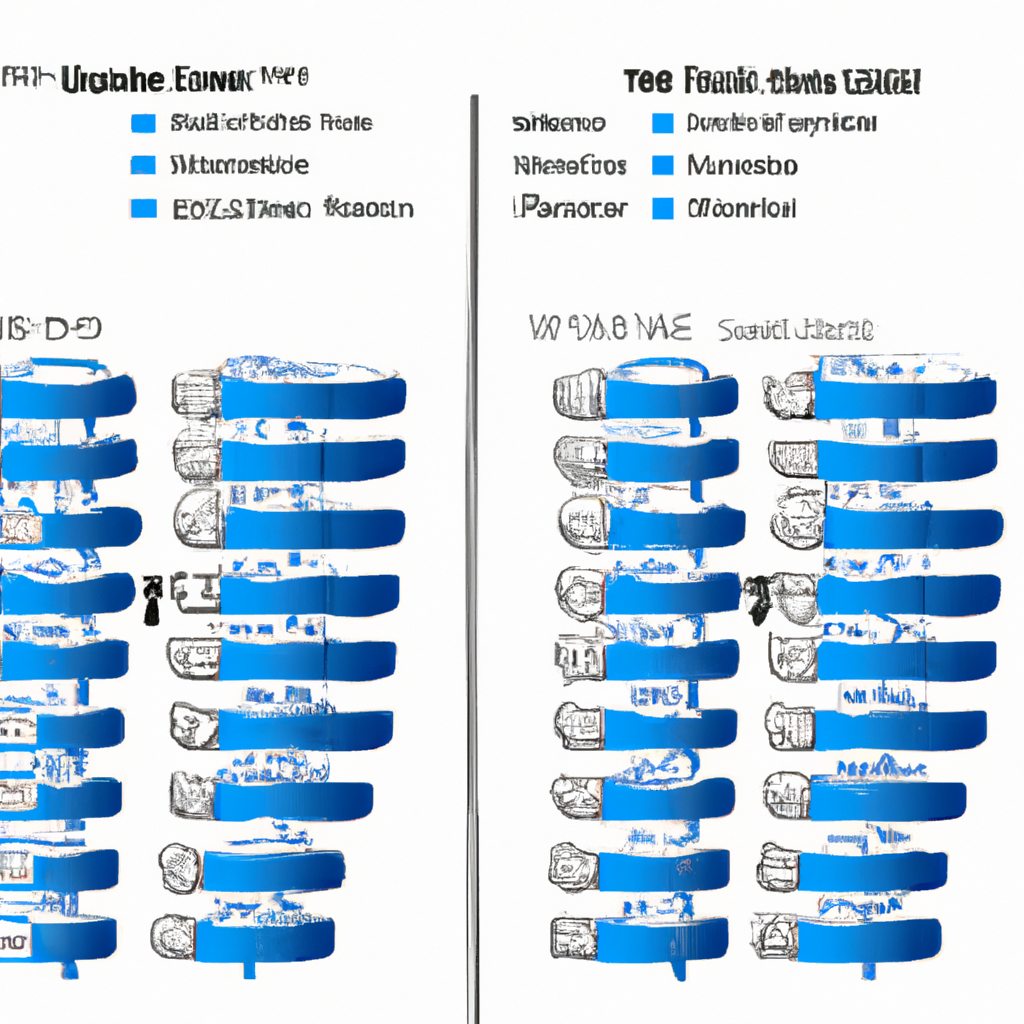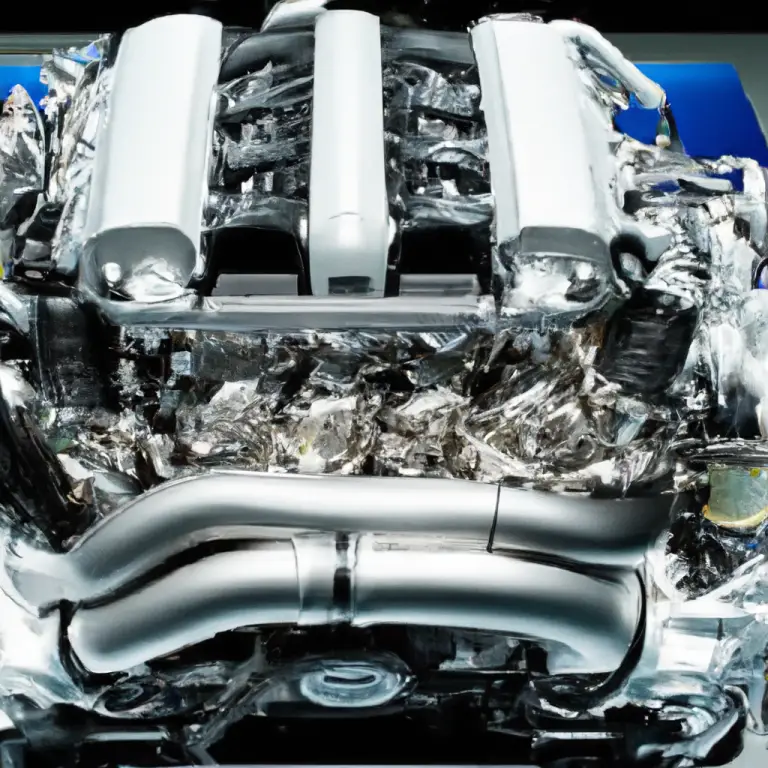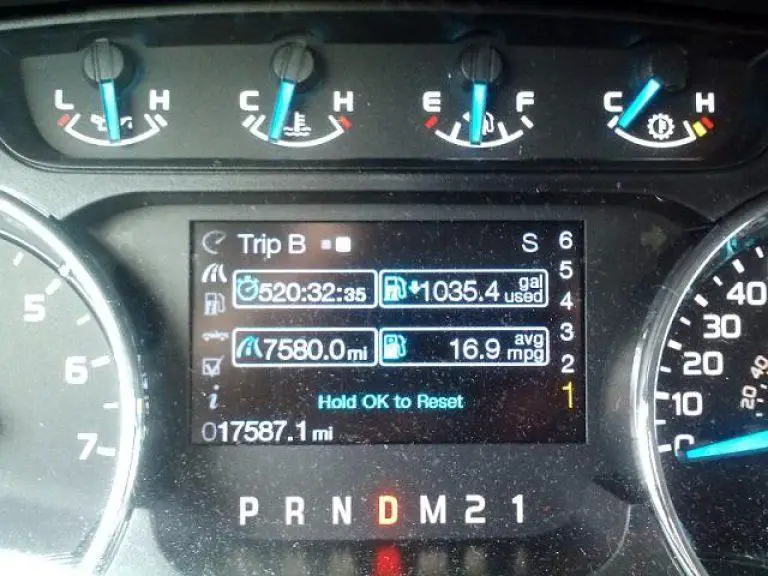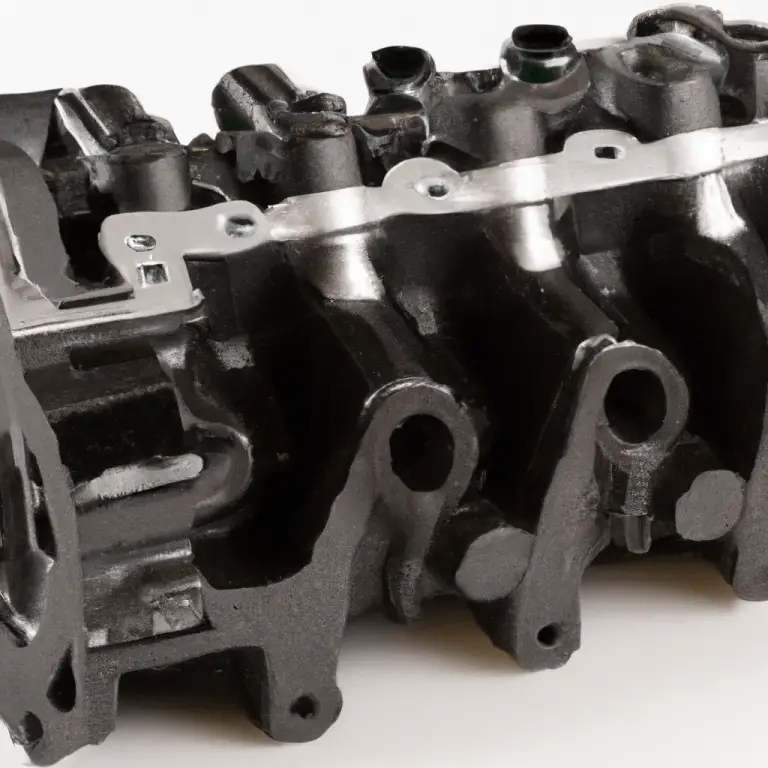Which Is Better 5.0 Or 3.5 Ecoboost
Last Updated on by David Jon
In the automotive world, the debate between the 5.0 and 3.5 Ecoboost engines rages on, as both Ford powerhouses offer their unique strengths. As a seasoned automotive enthusiast and professional, I am eager to dissect the advantages and nuances of each engine. This article will critically examine factors such as fuel efficiency, power output, and overall performance, providing readers with a comprehensive comparison. Through a precise exploration of each engine’s core aspects, this discourse aims not only to inform, but also to provide an engaging and detailed elucidation of this interesting topic. Join me as I navigate the technical landscape of these two renowned Ford engines, casting a light on the debate of whether the 5.0 or the 3.5 Ecoboost emerges superior.
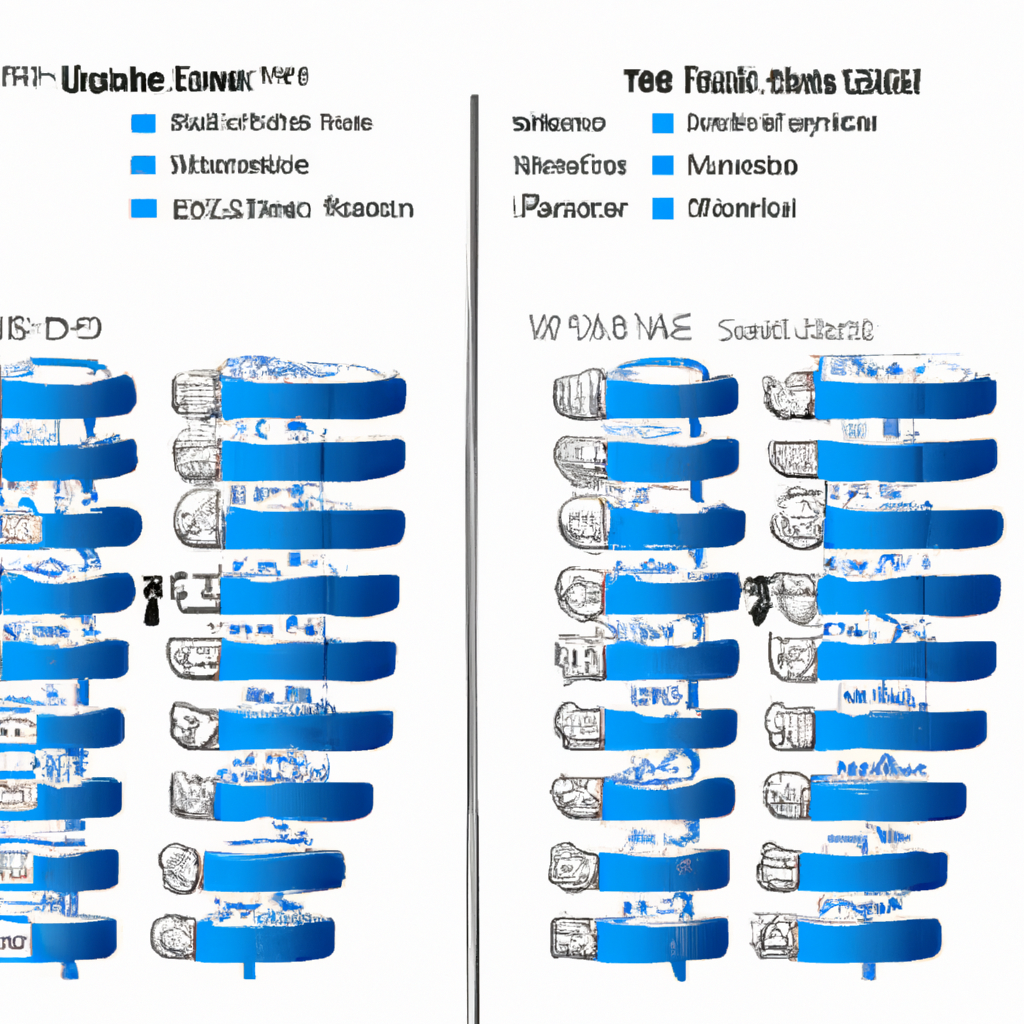
Background of the 5.0 and 3.5 Ecoboost Engines
Before we dive into the comparison between the 5.0 and 3.5 Ecoboost engines, let’s get a grasp of their history, technology, and key features.
Brief history of the 5.0 and 3.5 Ecoboost Engines
Derived from the highly successful lineage of Ford engines, the 5.0 and 3.5 Ecoboost engines have transformed the market perceptions of power and efficiency. The 5.0 engine, notable for its robust performance, originated from Ford’s V8 family in the late 1960s. On the other hand, The 3.5 Ecoboost engine, a part of Ford’s V6 family, was introduced in 2009, heralding optimal efficiency without compromising power.
Understanding the Ford Ecoboost Technology
Ford’s Ecoboost technology is a significant stride in engine innovation, achieving the elusive blend of power and efficiency. Essentially, Ecoboost unifies turbocharging and direct fuel injection, optimizing power output and reducing fuel consumption. By compelling more air into the combustion chamber, this technology allows smaller engines, like the 3.5 Ecoboost, to perform alike to their larger counterparts, such as the 5.0 engine.
Key Features of the 5.0 and 3.5 Ecoboost Engines
The most noteworthy feature of the 5.0 Engine is its high-displacement V8, renowned for resilient power. Whereas, the 3.5 Ecoboost engine’s hallmark traits entail twin-turbocharging and direct fuel injection, underscoring impressive horsepower and torque without consuming excessive fuel. Despite their distinct features, both engines share Ford’s commitment to producing reliable and performance-focused machinery.
Performance Evaluation: 5.0 Vs 3.5 Ecoboost
Now, let’s delve deep into an essential metric that drivers value – performance. By comparing horsepower, torque, towing, payload capacities, acceleration, and speed, we could ascertain which engine outperforms the other.
Horsepower and Torque: Comparison between the 5.0 and 3.5 Ecoboost
The 5.0 engine, with its high-displacement V8, delivers a potent punch, outputting up to 395 horsepower and 400 lb-ft. Alternatively, the 3.5 Ecoboost amazes with up to 375 horsepower and a stunning 470 lb-ft torque, credit to its twin-turbocharging. Consequently, despite the smaller size, the 3.5 Ecoboost surpasses the 5.0 in torque production.
Towing and Payload capacities: Contrasting the 5.0 and 3.5 Ecoboost
When it comes to towing and payload capacities, both exceed expectations. However, mainly owing to higher torque, the 3.5 Ecoboost engine fares slightly better, boasting towing and payload capacities up to 13,200 lb and 3,230 lb, respectively. Whereas, the 5.0 engine exhibits a comparably lower towing capacity and payload limit, at 11,500 lb and 3,300 lb, respectively.
Acceleration and Speed: Analyzing the performance of the 5.0 and 3.5 Ecoboost
Acceleration and top speed provide measures of engine prowess. The 5.0 and 3.5 Ecoboost engines accelerate from 0-60 mph in approximately 6 seconds, testifying their neck-to-neck performance. However, the 5.0’s V8 pedigree has a slight advantage in achieving a higher top speed.
Fuel Efficiency: 5.0 Vs 3.5 Ecoboost
Fuel efficiency is a critical matrix that varies significantly between the 5.0 and the 3.5 Ecoboost engines. Understanding the impact of Ecoboost technology on fuel efficiency forms an integral part of this assessment.
Fuel economy and mileage: Comparing the 5.0 and 3.5 Ecoboost
While both engines manifest reasonable fuel economy, the 3.5 Ecoboost outshines the 5.0 by achieving up to 18 mpg city and 25 mpg highway, compared to the 5.0’s 15 mpg city and 22 mpg highway. This is an attest to the efficiency of Ford’s Ecoboost technology.
CO2 emissions: Assessing the environmental impact of the 5.0 and 3.5 Ecoboost
In an era where environmental responsibility is paramount, CO2 emissions become an essential gauge to consider. Here, the 3.5 Ecoboost, with its superior fuel efficiency, naturally outperforms the 5.0, contributing to a lower carbon footprint.
Understanding the impact of Ecoboost technology on fuel efficiency
The Ecoboost technology’s primary advantage is its capability to extract more power from every drop of fuel, leading to enhanced fuel efficiency. The 3.5 Ecoboost engine, equipped with this technology, gives a remarkable testament to this theory – offering immense power and torque while maintaining superior fuel economy.
Maintenance and Longevity: 5.0 Vs 3.5 Ecoboost
Maintenance and longevity are crucial aspects when it comes to choosing an engine. Let’s evaluate these metrics and understand the complexities associated with the 5.0 and 3.5 Ecoboost engines.
Long-term reliability and durability: Analyzing the 5.0 and 3.5 Ecoboost
The 5.0, being uncomplicated and reinforcing the V8 lineage, has proven its resilience and dependability over the years. Contrarily, the 3.5 Ecoboost engine, despite being technologically advanced, is relatively new and might require a longer timeframe to verify its long-term reliability.
Maintenance requirements: Comparing the 5.0 and 3.5 Ecoboost
Given the 5.0 engine’s mechanical simplicity, its maintenance is generally more straightforward and less expensive. In comparison, the 3.5 Ecoboost, owing to twin-turbochargers and other sophisticated components, may necessitate regular specialized attention and could incur higher maintenance costs.
Common problems and solutions with the 5.0 and 3.5 Ecoboost Engines
Like any mechanical system, both engines can exhibit issues. The 5.0 may occasionally suffer from failures in ignition components like spark plugs and coils. In comparison, the 3.5 Ecoboost might experience issues related to the turbocharger and cooling system. Nonetheless, with proper and regular maintenance, these issues can be mitigated.
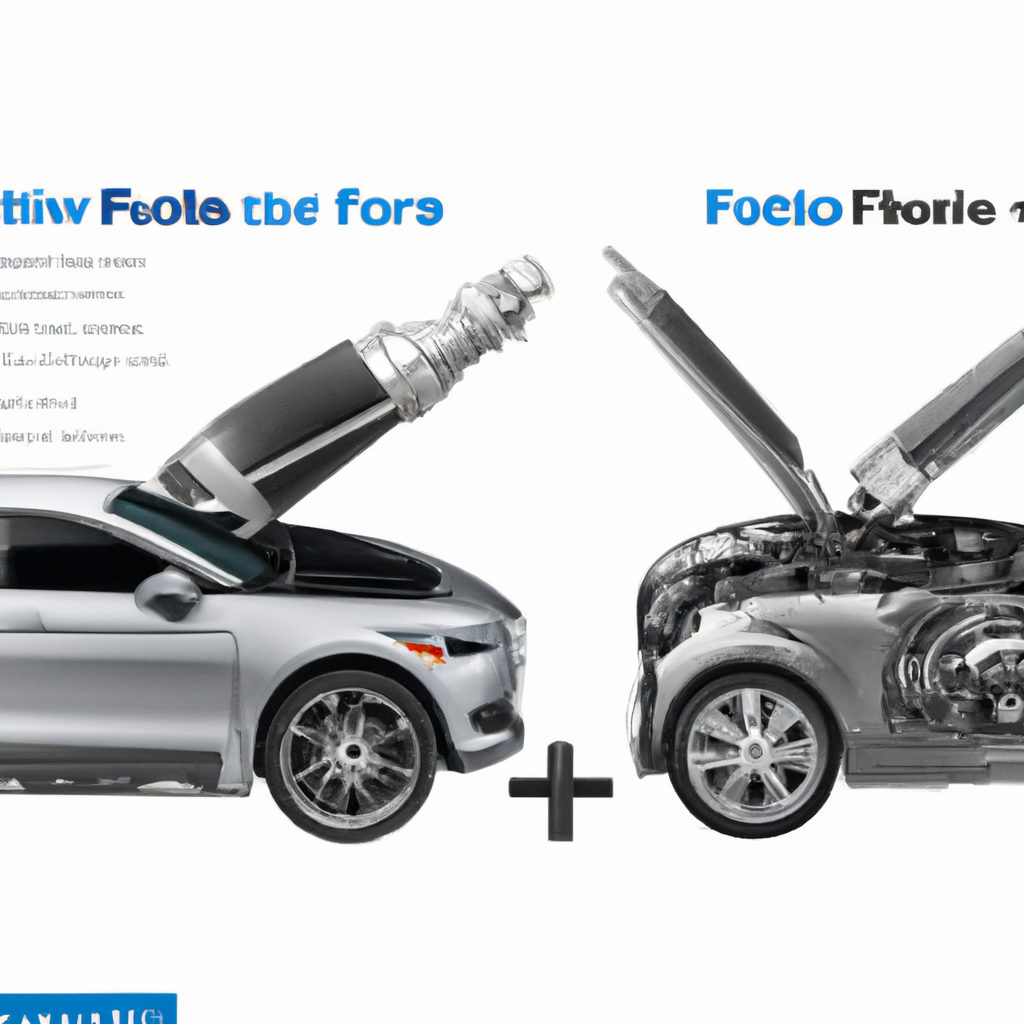
Price Assessment: 5.0 Vs 3.5 Ecoboost
Cost considerations incorporate several factors, from initial purchase to ownership expenses and resale value.
Initial purchase price: Contrast between the 5.0 and 3.5 Ecoboost
When it comes to initial purchase price, the 5.0 engine generally costs less than its 3.5 Ecoboost counterpart. This is primarily due to the latter’s advanced technology and components contributing to higher manufacturing costs.
Cost of ownership: Assessing the 5.0 and 3.5 Ecoboost
For cost of ownership, the 3.5 Ecoboost engine, thanks to its superior fuel efficiency, can offset its higher upfront price by saving costs in long term fuel consumption. However, the higher maintenance costs associated with sophisticated parts might weigh in on the total cost of ownership.
Resale value: Comparison of the 5.0 and 3.5 Ecoboost Engines
While both engines hold good resale value, the 3.5 Ecoboost, due to its improved fuel efficiency and modern features, typically commands a higher resale price than the 5.0.
User Reviews and Ratings: 5.0 Vs 3.5 Ecoboost
User reviews, opinions, and ratings play a vital role in understanding the real-world performance and reliability of these engines.
Market Perception: Understanding the popularity of 5.0 and 3.5 Ecoboost
Both engines have garnered positive market reception. The 5.0 is cherished by enthusiasts for its robust performance and dependable nature. Simultaneously, the 3.5 Ecoboost has carved a niche for itself by offering exceptional power and efficiency, garnering positive reviews from users globally.
End-user testimonials: Gathering feedback for the 5.0 and 3.5 Ecoboost
End-user testimonials corroborate the strengths and weaknesses of these engines. Users of 5.0 engines commend their robust performance and simplicity, whereas those who prefer the 3.5 Ecoboost applaud its power-packed efficiency and cutting-edge technology.
Rating platforms and public opinion: Evaluating reviews for the 5.0 and 3.5 Ecoboost
Various online platforms and automotive forums provide forums for users to express their views and rate these engines. On these platforms, both engines have been highly rated, with specific preferences attributed to power, efficiency, and maintenance aspects.
Real-World Driving Experience: 5.0 Vs 3.5 Ecoboost
Real-world driving highlights important aspects such as on-road performance, off-road capabilities, and handling comfort.
On-road performance: Comparing the 5.0 and 3.5 Ecoboost
Both engines outperform on road, demonstrating ample power, acceleration, and speed. However, thanks to its additional torque, the 3.5 Ecoboost engine provides a slightly smoother and more responsive driving experience.
Off-road capabilities: Analyzing the 5.0 and 3.5 Ecoboost
While off-roading, both engines showcase remarkable power and control. While the 5.0 makes for and impressive drive with its dependable power, the 3.5 Ecoboost comes with additional torque which can be highly beneficial in challenging off-road conditions.
Handling and ride comfort: Experiencing the 5.0 and 3.5 Ecoboost
In terms of handling and ride comfort, both engines ace the test, providing robust power output and smooth acceleration. But again, the 3.5 Ecoboost’s superior torque leads to a somewhat smoother and more comfortable ride.
Popular Ford Models with 5.0 and 3.5 Ecoboost engines
Identifying popular Ford models equipped with the 5.0 and 3.5 Ecoboost engines helps to draw a more comprehensive comparison.
Identifying the Ford models equipped with the 5.0 and 3.5 Ecoboost
The 5.0 engine can be found in models like the Ford Mustang and F-150, two of Ford’s most popular vehicles. Meanwhile, the 3.5 Ecoboost engine has been installed in the Ford F-150, Expedition max, and the Lincoln Navigator.
Market acceptance and sales: Analyzing the success of models with 5.0 and 3.5 Ecoboost
Models powered by these engines are successful and have recorded impressive sales figures. This success can be attributed to the balanced power and efficiency provided by these engines, making them an attractive proposition to many car buyers.
Performance specs of popular Ford models with the 5.0 and 3.5 Ecoboost
The performance specs of vehicles powered by these engines are equally impressive. Whether it’s acceleration, top speed, or towing capacity, models powered by the 5.0 and 3.5 Ecoboost engines tend to outclass many competitors in their respective segments.
Recent Developments in the 5.0 and 3.5 Ecoboost Engines
Innovation and upgrades drive Ford’s engine development, so let’s look at the recent advancements made for these engines.
Latest technology and upgrades in the 5.0 and 3.5 Ecoboost
Both engines benefit from ongoing improvements, enhancing performance, fuel efficiency, and reducing emissions. The 5.0 has diligently improved over its predecessors, with the latest version offering more power and efficiency. Meanwhile, the 3.5 Ecoboost has been upgraded with even more advanced turbocharging and fuel injection technologies for improved performance.
Future prospects of the 5.0 and 3.5 Ecoboost
As technology developments continue, it is expected that both the 5.0 and 3.5 Ecoboost engines will benefit from further refinements, enhancing performance, efficiency, and emission standards.
Upcoming Ford models featuring the 5.0 and 3.5 Ecoboost
Ford plans to keep these engines in its future line-up, signifying their success and acceptance. While confirming specific upcoming models is beyond our scope, we know Ford stays committed to using both engines due to their versatility and performance characteristics.
Conclusion: Is the 5.0 Better than the 3.5 Ecoboost?
Having compared and assessed these engines on multiple fronts, it’s challenging to conclude which is superior.
Summing up the key differences between the 5.0 and 3.5 Ecoboost
While the 5.0 provides robust performance and simplicity, the 3.5 Ecoboost offers advanced technology, superior efficiency, and torque. So, your preference would depend on what you value more – the classic performance of a V8 or the advanced efficiency of a twin-turbo V6.
Determining the better choice: 5.0 or 3.5 Ecoboost
Deciding on the better choice boils down to personal preference and requirements. If you value power, simplicity, and have a softer spot for the V8 rumble, then the 5.0 engine would be a perfect fit. Alternatively, if you prefer cutting-edge technology, advanced efficiency, and high torque, then the 3.5 Ecoboost engine should be your pick.
Recap: Advantages and disadvantages of the 5.0 and 3.5 Ecoboost
The 5.0 comes with proven resilience, power, and less complexity, but it trails in efficiency and tech-savviness. The 3.5 Ecoboost boasts advanced technology, superior efficiency, and high torque but might command a higher upfront and maintenance cost.
In the end, the battle between the 5.0 and 3.5 Ecoboost is a tight one, with each catering to different preferences and needs. Regardless of which you choose, rest assured that both engines exemplify Ford’s commitment to delivering performance, reliability, and satisfaction to every driver.

